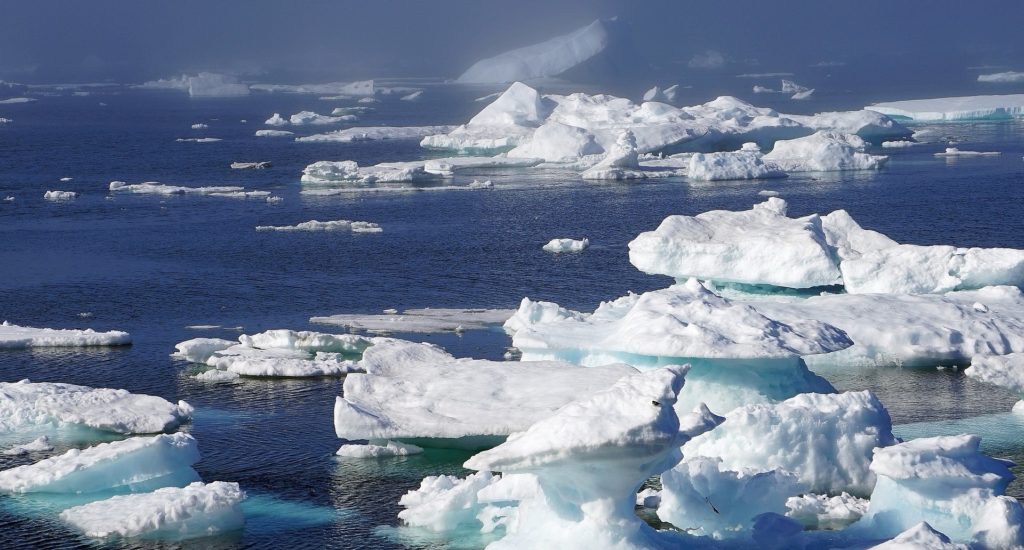Global warming could continue after net zero

Sea ice helps reduce global temperatures by reflecting the sun’s energy back into space
Global warming could continue after we reach net-zero CO2 emissions, researchers have warned.
The UN Climate Panel’s latest best estimate is that warming will end at net zero.
But the new study, by an international team including Imperial College London and the University of Exeter, warns significant warming could occur after that.
The researchers map uncertainty in current climate modelling and propose a framework to better predict future warming.
The resulting risks must inform climate mitigation and adaptation policies to protect future generations.
Commenting on the estimate that warming will stop at net zero, Imperial College London’s Professor Joeri Rogelj said: “These estimates come with substantial uncertainty, meaning there is a non-negligible chance that global warming will continue after net zero and intensify dangerous climate change.
“Worldwide emissions reduction plans overlook this important risk, which should be urgently addressed at COP28.”
The article presents the first comprehensive analysis of the many factors controlling global temperatures and provides a framework for improving warming predictions.
“Our analysis identifies the levers of global warming after net zero, and explains why current estimates are so uncertain,” said lead author Sofia Palazzo Corner, also of Imperial College London.
“The potential of future climate risks in a net zero world makes the need to limit our initial disturbance to the planet even more imperative.
“Crucially for policy, a world that expects warming to continue after net zero will have an even smaller carbon budget to keep total warming below 1.5°C.”
Professor Michael Mann, at the University of Pennsylvania, said that despite its alarming message on the prospect of continued global warming, this study offers hope.
“It reminds us that the obstacles to climate action are neither physical nor technological,” he said.
“At this point, they remain political.
“And history teaches us that political obstacles can be overcome.”
Why would global warming continue in a net zero world?
Global temperatures are regulated by multiple natural processes and feedbacks in the oceans, land and atmosphere.
CO2 emissions have influenced many of these, triggering long-term changes which could last for centuries after net zero is reached.
“The melting of ice in polar regions is one example,” said Professor Martin Siegert, from the University of Exeter.
“As we have observed in the Arctic Ocean, and recently in the Antarctic, a thin layer of floating ice helps reduce global temperatures by reflecting the sun’s energy back into space.
“However, once this ice melts this reflection is replaced by absorption of solar energy, which drives temperatures even higher.”
Even current climate models show these processes could cause significant warming after net zero – with an estimated one in six chance this warming could exceed 15% of total global warming.
This means that if global temperatures have risen by 2°C at the point we reach net zero, the final temperature change could be above 2.3°C.
“Warming of this magnitude would worsen major climate risks to communities across the world, and particularly in the most vulnerable regions,” said Professor Siegert.
Towards a better understanding of future global warming risk
Despite persistent progress in the field, exploring the full range of climate change risks is challenging.
Models are already very expensive to run and every added process further increases the computational burden.
“We need a collaborative effort between diverse climate experts to develop a suite of scientific tools that allow us to more deeply explore and understand the level of global warming we can expect,” said Professor Rogelj.
“Our study takes the first step by mapping all processes that affect global temperatures and estimating their impact across millennia.”
The international team – which additionally includes researchers from the University of California Berkeley, Melbourne University, and the Max Plank Institute – identified 26 distinct processes, of which more than half could drive significant warming.
One example is a decline in land carbon uptake.
Plants are important mitigators of global temperatures since they use CO2 during photosynthesis.
But other climate processes, such as changing rainfall patterns, droughts, and heatwaves, can reduce the efficacy of this “carbon sink”.
“We have drawn on expertise across climate science to build a catalog of processes that could affect global temperatures in a net zero world, but we need to better understand their potential impact,” said Palazzo Corner.
“We propose a set of key research activities to reduce this uncertainty and improve warming predictions as quickly as possible.”
We must reach net zero CO2 as soon as possible
The study’s take-home message is that the future is more uncertain than we think, and so we must adjust our climate mitigation policies to prevent further warming after net zero.
“We are working on building better models, but should not wait until they are perfect before we act,” said Professor Rogelj.
“We must take a precautionary approach and drastically reduce emissions now with the goal of achieving net zero CO2 as soon as possible and preventing climate harm to future generations.”
Professor Siegert added: “Even if global warming did stop at net zero, we must remember that once started, some processes will continue for centuries.
“Sea-level rise for decades after net zero is an example we must plan for, but there may be others that require further analysis. By urgently cutting emissions we can prevent future risks.”
The paper, published in the journal Frontiers in Science, is entitled: “The Zero Emissions Commitment and climate stabilization.”
The article is part of the Frontiers in Science multimedia article hub: “Global warming after net zero CO2”.
The hub features editorials, viewpoints and policy outlooks from other eminent experts.



